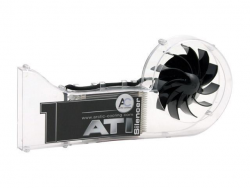- Joined
- Oct 5, 2017
- Messages
- 595 (0.21/day)
I remember a time when it seemed like absolutely everyone did an aftermarket GPU cooler - I know Thermaltake did, Arctic did (And still do), hell, I had a Zalman cooler on my old 7600GT that was pretty nice, and lives on in a family member's rig.
But these days the field seems very thin - I actually only know of Arctic still selling aftermarket GPU coolers.
What's out there these days?
But these days the field seems very thin - I actually only know of Arctic still selling aftermarket GPU coolers.
What's out there these days?







